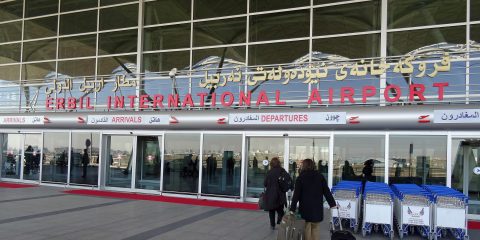A tale of two cities
"There are families living in this alleyway.” The Arabic words were hand-painted in red, black, and blue on a tattered canvas, pinned up where a small side street led off a main thoroughfare in Iraq's Mosul. The alleyway looked anything but livable — bullet holes and craters from mortar rounds still scarred the walls around […]"There are families living in this alleyway.” The Arabic words were hand-painted in red, black, and blue on a tattered canvas, pinned up where a small side street led off a main thoroughfare in Iraq's Mosul. The alleyway looked anything but livable — bullet holes and craters from mortar rounds still scarred the walls around it nearly two years after the fighting had stopped, and sewage water gurgled down the cracked pavement. The banner, my AFP colleagues said, was hung to alert passing aid groups to needy residents eking out a living, unseen, in the battered labyrinth of west Mosul.
It was my first time back in Mosul since a brief assignment for AFP in October 2016, when the Iraqi military was waging a massive offensive to oust the Islamic State group. That fight took nine brutal, bloody months, its objective was carefully defined, materially supported, and ultimately achieved -- with meticulous coverage by global media.
What I slowly absorbed after a few days in post-IS Mosul -- and its Syrian twin city Raqa a few weeks later -- is that what comes after is infinitely more complex to chart out and to report faithfully. There is no step-by-step strategy to rebuild a city's spirit. There's no unified command-and-control center. It's usually not even clear what victory is supposed to look like or when it can be declared. But just as we have covered every aspect of the military struggle, we should carefully and passionately provide testimony from the cities and societies painstakingly lifting themselves out of war.





